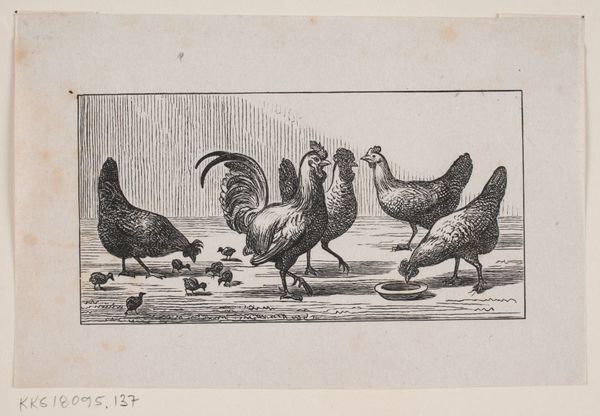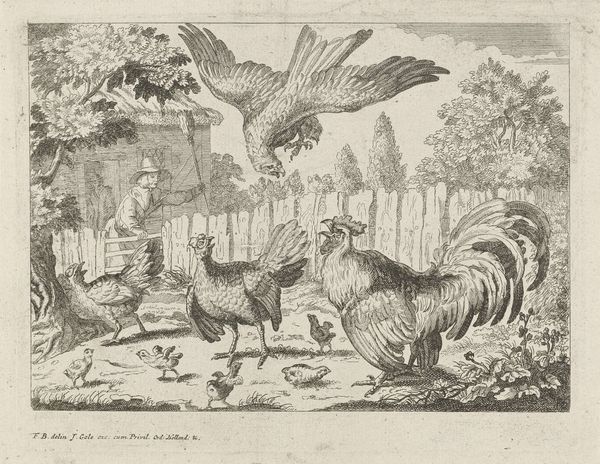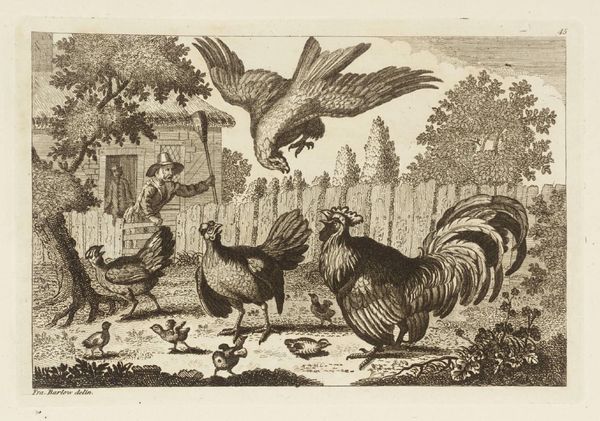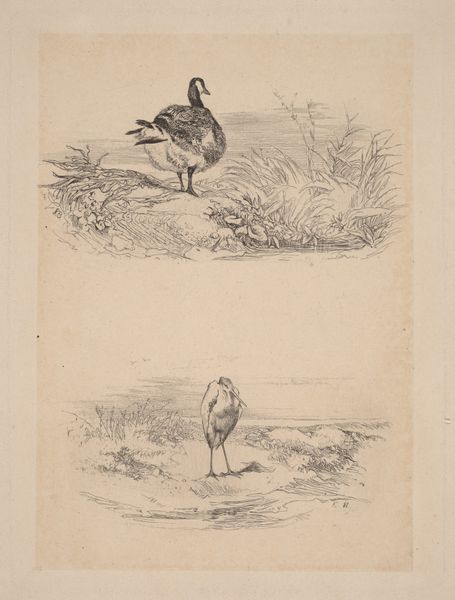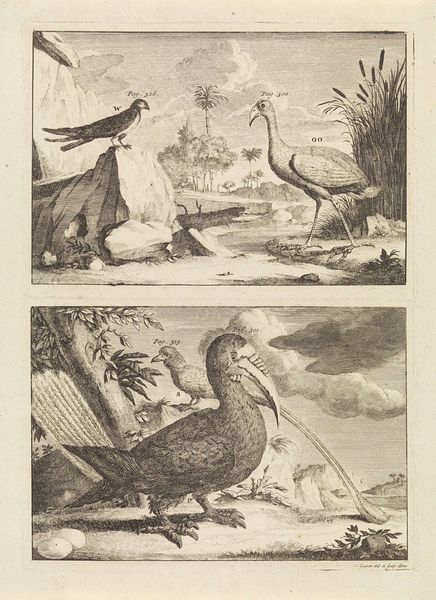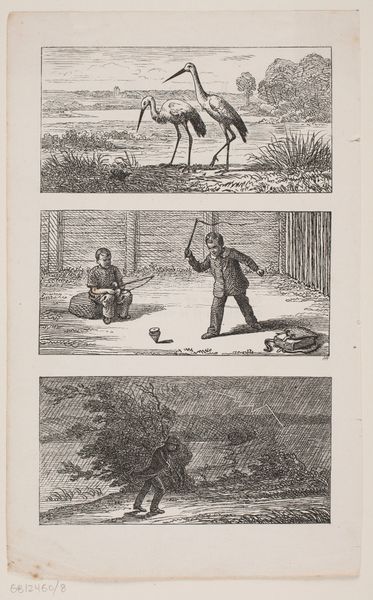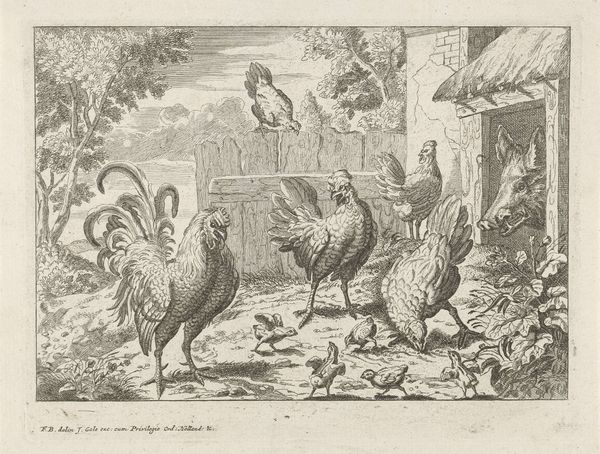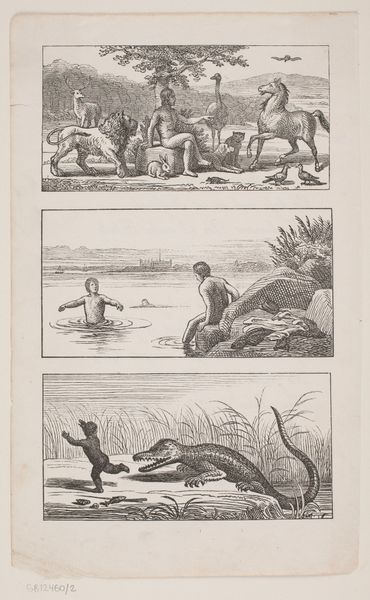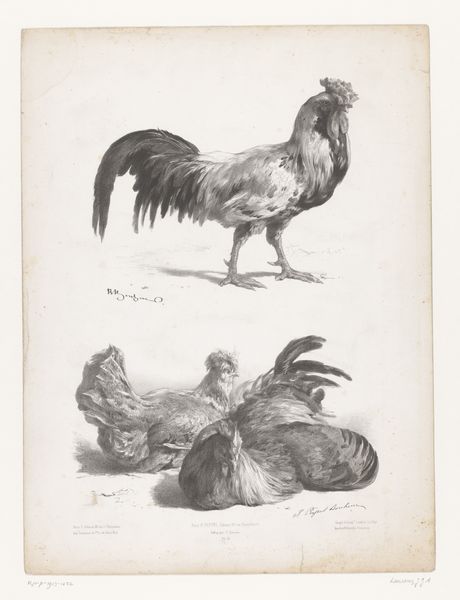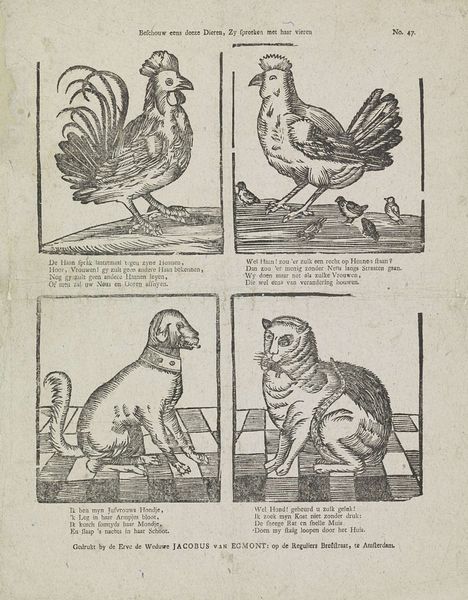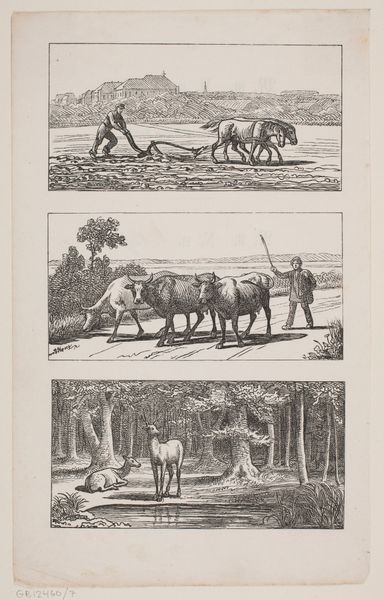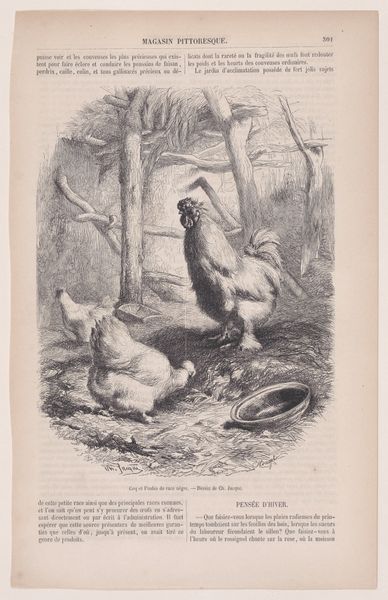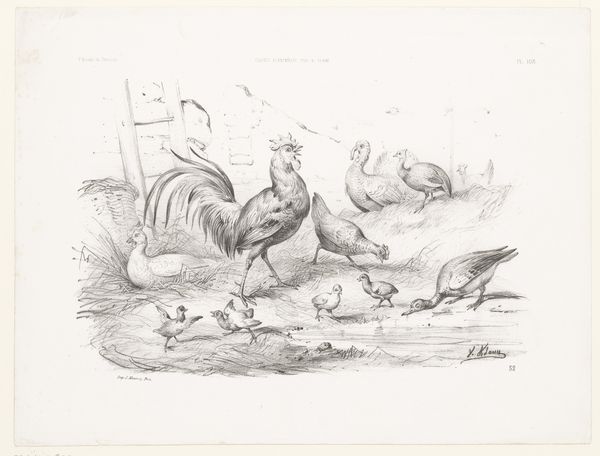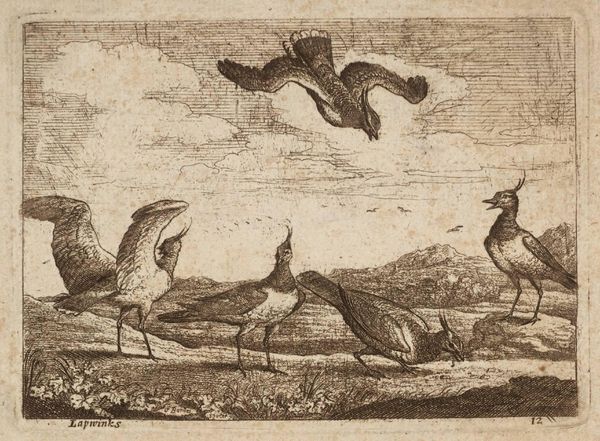
drawing, print, engraving
#
drawing
#
narrative-art
# print
#
genre-painting
#
engraving
Dimensions: 220 mm (height) x 137 mm (width) (bladmaal)
Editor: This is "Illustration til Chr. Winthers A.B.C." by H.P. Hansen, dating back to 1863. It seems to be a print or engraving, and features three distinct scenes. The scenes together feel almost like snippets of daily life from that era. How do you interpret this work in the context of its time? Curator: These illustrations, likely intended for a children's ABC book, offer a fascinating glimpse into the values and social structures of 19th-century Denmark. Note how each scene presents a specific aspect of everyday life - a runaway horse, barnyard fowl, and winter leisure. The artist's decision to showcase these scenes indicates what was deemed important or representative for children of that time. Why do you think these particular images were selected to educate young children? Editor: Perhaps it's to teach children about different seasons, animals, and societal norms, as the prints suggest particular human interactions with animals, the depiction of leisure activities during winter, and the presentation of rural life. Does the social class and role of women influence these depictions? Curator: Absolutely. The depiction of leisurely winter activities hints at a certain level of affluence. And even though a female figure can be seen as a passenger in the sleigh being pushed on the ice, their implied leisure and protected role would be something considered to be for the wealthier social class at the time. The artist doesn't present women outside these roles; thus, it solidifies a social commentary of this period. How does recognizing that change the piece for you? Editor: It makes me wonder about the narratives *not* shown and how much they influence what is actually on display here. Thinking about that is important because it invites a further interrogation of who the intended audience was, who was able to consume and reflect on these depictions of society. I guess I can say I see now the cultural norms, socio-political settings and structures in the series of illustrations as being just as valuable in its artistic expression. Curator: Yes, by understanding the art and the historical lens we view the artwork by, can we learn its true value. Thank you for being here today.
Comments
No comments
Be the first to comment and join the conversation on the ultimate creative platform.
